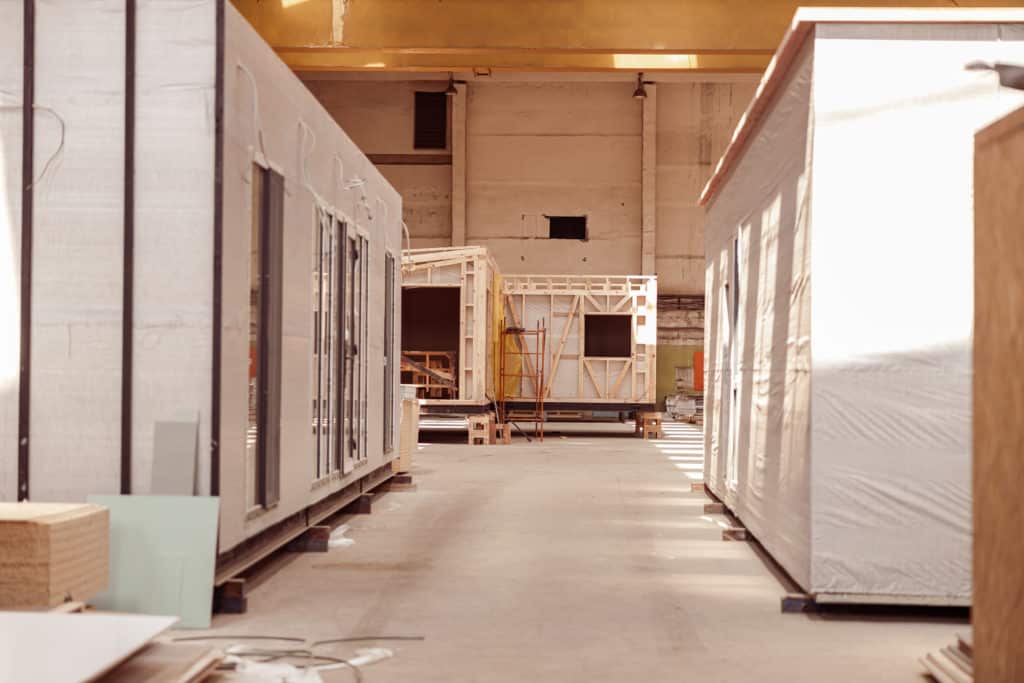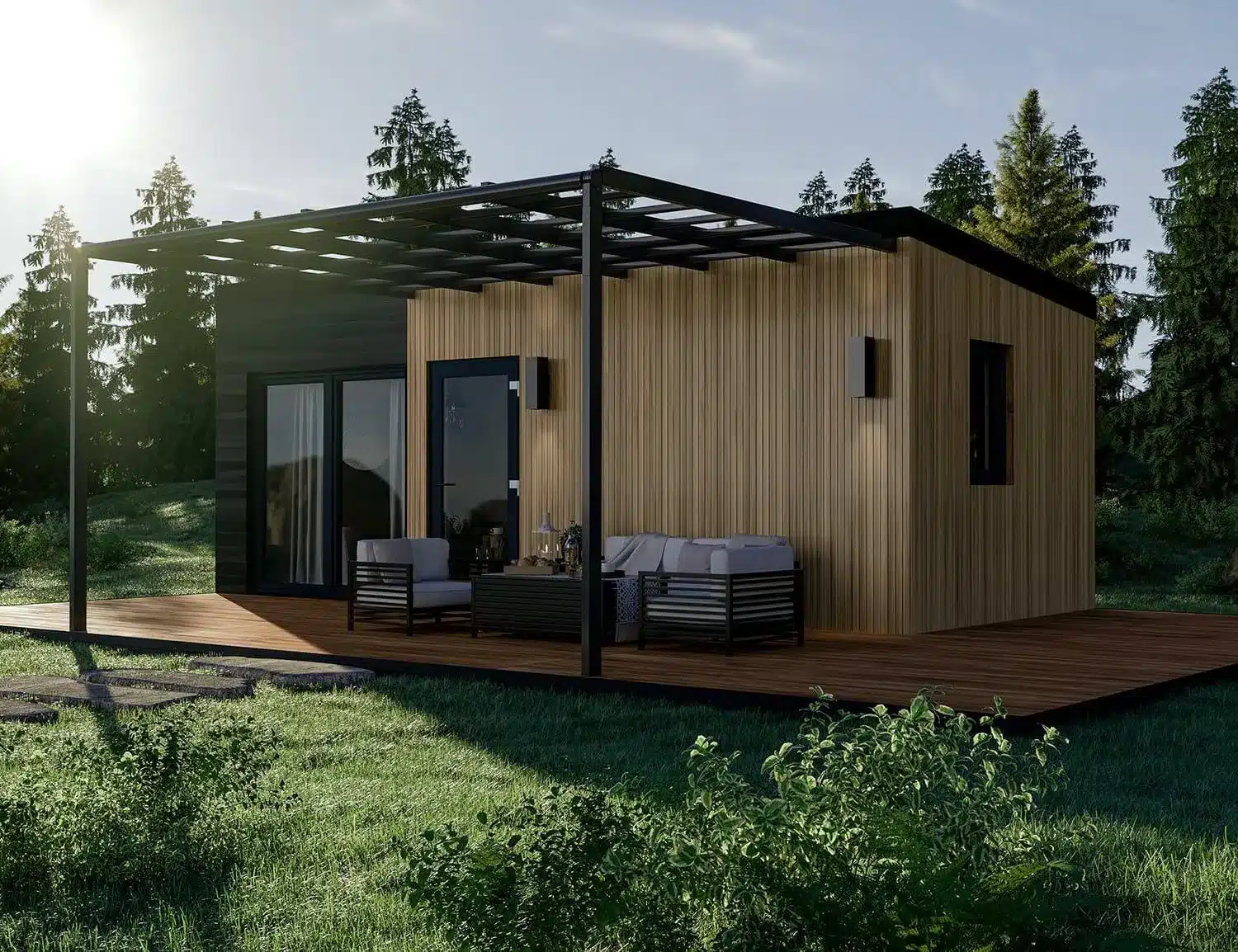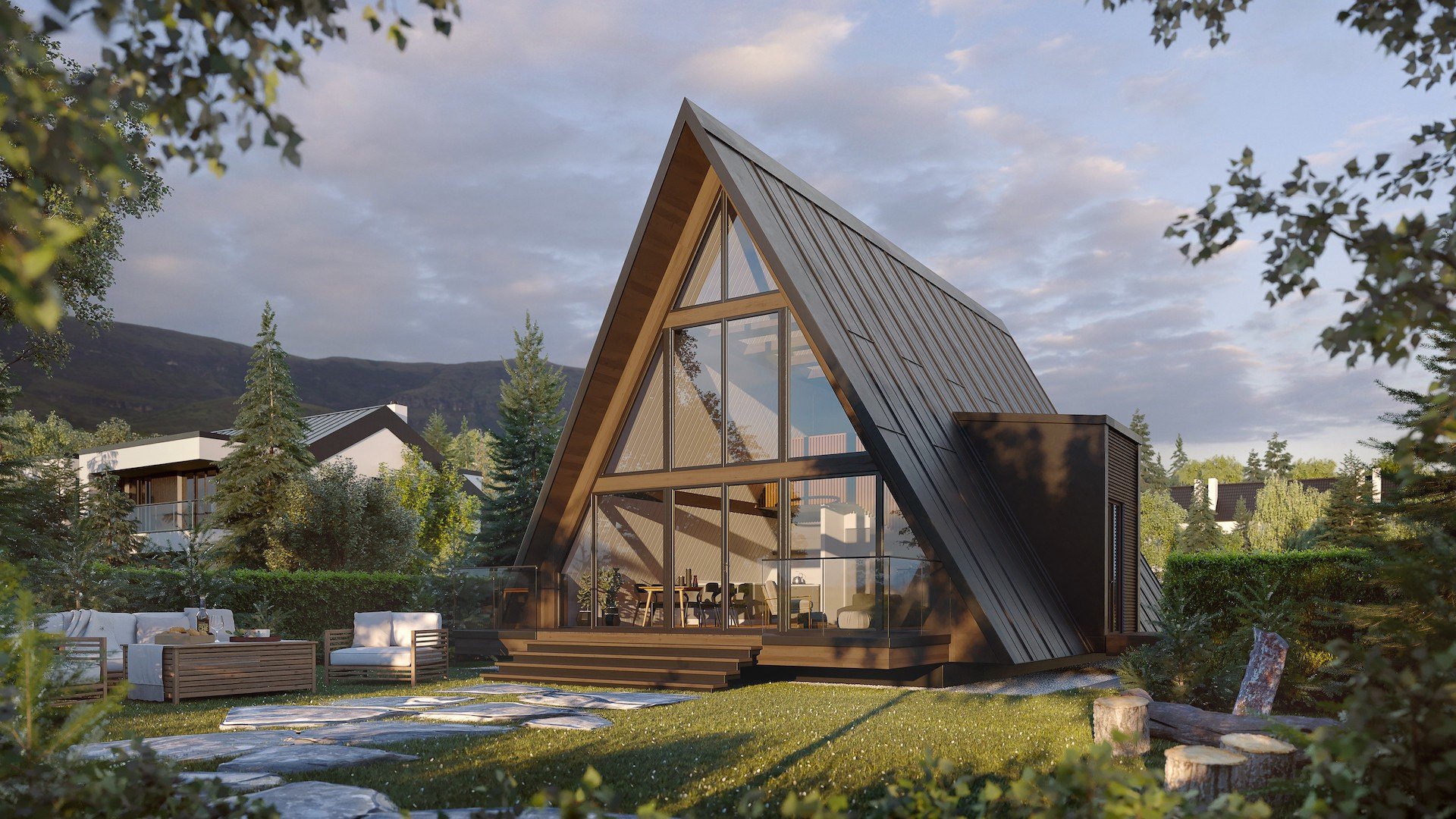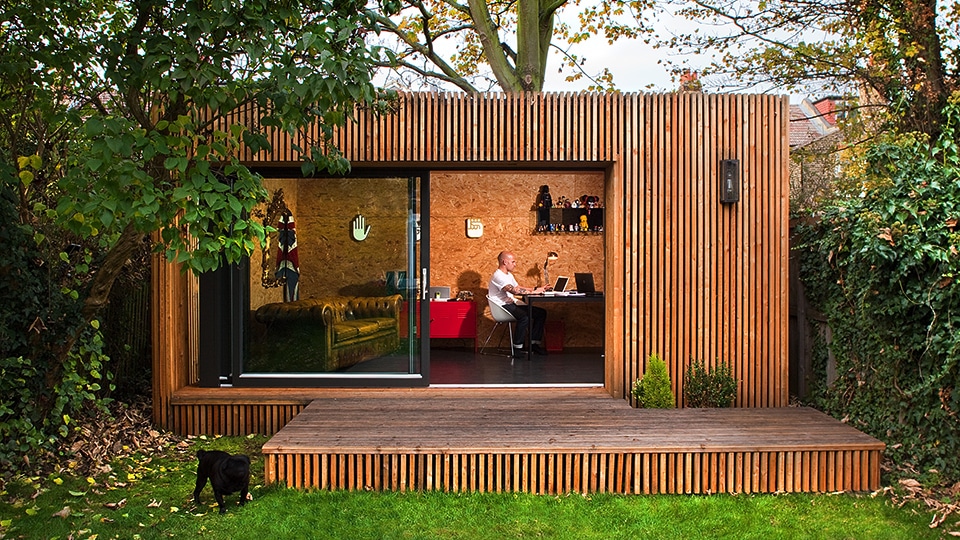Modular homes are transported from the factory to site in pieces, and manufactured homes are transported whole or in two halves. Modular and manufactured homes benefit from the advantages of factory production relating to the reduced site time required and the more controlled construction environment.
In the factory environment, it’s easier to manage materials and personnel which improves safety and efficiency. This leads to cost savings as long as the factory is sufficiently busy to operate efficiently. Meanwhile, houses built entirely on-site face the challenges of weather affecting exposed materials and working conditions, much more working from height, the potential for challenging ground conditions and managing resulting mud and hygiene on site, and the daily management of deliveries and waste collection from site.
Both are typically constructed of timber which is lightweight and robust. In the past modular, or prefabricated houses have been built using concrete panels, and more eco-friendly modern alternatives include pre-fabricated straw bale cassettes.
We’ll take you through the characteristics and advantages of both modular and manufactured homes.
What is a modular home?
Modular homes, which are sometimes referred to as prefabricated homes, are transported to site as a collection of modules that are then assembled onto foundations using a crane. Modules must be sufficiently robust to withstand transportation and maneuvering through factory and assembly processes, and therefore modular homes are generally built more robust than traditional houses.
What is a manufactured home?
Manufactured homes are entirely constructed in the factory, and are then transported whole to site on a lorry. This naturally limits the size of manufactured houses to whatever can be transported by lorry. They are built on a chassis, which means they usually need minimal or no foundations. In the US, a manufactured home is defined as a house that is entirely built in a factory to US Department of Housing and Urban Development standards that were passed in 1976.

Regulations and Finance:
As modular homes are subject to the same building regulations as any site-built house, they are much easier to finance, and remortgage and they appreciate in value as traditional houses do. In addition, the modules will undergo internal inspection before they leave the factory, so the build quality is usually very good.
In contrast, manufactured houses may not be subject to building regulations. This varies from country to country, and varies according to the nature of your specific manufactured house. A manufactured house is generally considered to be a permanent building that will be brought from the factory and installed on site where it will stay. Therefore, it would still need planning permission, even if building regulations are avoided, effectively replaced by the process of in factory CE certification. Either way, you should have the conversation with your local planning department BEFORE you commit money to house construction.
*For clarity, planning permission is the permission required to erect or place any structure on a plot of land in line with the local planning strategy and considering impact on neighbors and the local environment, whereas building regulations are the technical documents that set the parameters to which a building must be constructed- including minimum standards of insulation, and other specifications that ensure reasonable longevity and robustness, function, safety and health for occupants.
Where a manufactured house avoids building regulations, they are much harder to finance, even if they are permanently installed in one location. This may seem ironic as the build quality is factory managed and signed off, but they are still outside the construction norm, and have historical association with houses that are built for summer use on holiday parks only. Some home buyers are glad to avoid the building regulations process and enjoy the reduce cost, but only if they have innovative financing or sufficient capital to purchase the house off the shelf. For the same reasons that affect their mortgageablitiy, manufactured houses tend to depreciate in value, in contrast to modular houses that would appreciate like any other traditional house construction.
Pricing:
A modular house may be affordable compared to traditional site-built houses, but a manufactured house would be about 50% of the cost for a similar specification. Manufactured housing is undergoing something of a resurgence as house prices rise, and land purchasing becomes more competitive. As manufactured houses don’t have to comply with building regulations and are also potentially mobile, a rising market now offers high specification models that can lead to huge savings in build costs, as long as the home buyer has the capital available to make the purchase outright.
Manufactured houses are naturally small houses, so they are naturally cheap to run and maintain. The popularity of the tiny house movement has also sparked interest in compact living, to reduce carbon emissions, price, and living costs.
Mobility:
Manufactured houses are easier to move, though in practice they are often installed in one place where they stay for their entire lifespan. Modular houses definitely can’t be moved, though there are some innovative design concepts around modular houses in which modular units can be easily added, or taken off a house in response to changing household needs.
Sustainability:
Modular homes naturally lend themselves to high-quality, precision construction including high-quality insulation detailing, because it is done in a very controlled environment where it is easier to implement and inspect. Many modular homes have insulation fitted in the factory, and this means that they generally perform very well in terms of energy efficiency and avoiding cold spots, which are common in traditional construction where awkward details lead to gaps or slumps in insulation. This all means that you are likely to spend less on heating a modular home even if built to the same specification as a site-built home and that more importantly, you will reduce your carbon footprint.
Manufactured homes have limited space, so minimal insulation thickness is typical, and the use of thin high-performance materials such as multifoil is common, which are then vulnerable to becoming punctured as services and finishes are installed. Manufactured homes, can have external wall insulation fitted later, or improvements to windows and doors, but the mobile and space-restricted nature of the house, together with its place at the budget end of the housing market, and in the holiday house sector, means that many manufactured homes may be well built, but to a low specification when it comes to insulation, and therefore expensive and carbon-intensive to heat.
In both cases, factory-based construction leads to more efficient material use as stock is used across projects, and waste products like sawdust and offcuts are more easily gathered and repurposed in the clean controlled factory, to make animal bedding, wood pellets or MDF.
Should I buy a modular or manufactured home?
Modular homes are simply an efficient and more sustainable way of building a standard home. It may be cheaper than a site-built house, and you’ll likely benefit from a higher quality build, and reduced site time, which means a quicker all round process, with the modules being built at the same time as the foundations on site.
Manufactured homes are suitable as a low-cost and sometimes relatively portable option, particularly if the homeowners enjoy tiny house living. A manufactured house may be the perfect option to fit on a small plot, or even occupy space on someone else’s plot. They are well suited as temporary living space whilst construction of the main house is underway, to be sold off later, or repurposed as space for home office, guests, or extra living space.
Modular and manufactured houses lend themselves to very different situations and homebuyer needs, but they are both cost-efficient options and well worth considering as you research the possibilities for your next house build.




